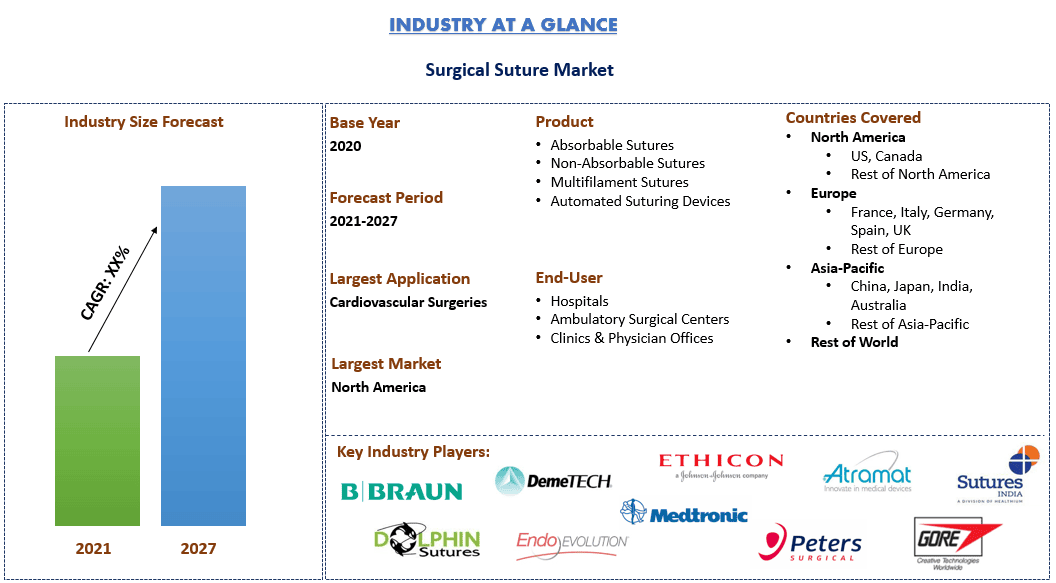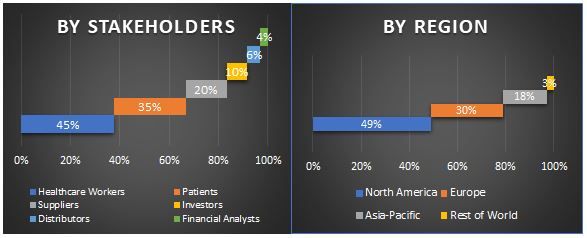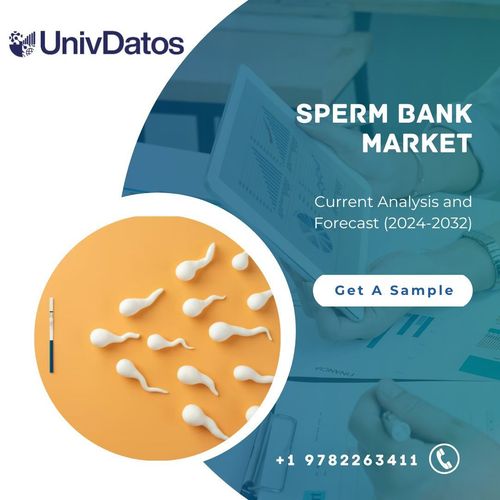Surgical Sutures Market: Current Analysis and Forecast (2021-2027)
Emphasis on Products (Absorbable Sutures, Non-Absorbable Sutures, Multifilament Sutures, Automated Suturing Devices); Application (Cardiovascular Surgeries, General Surgeries, Gynecological Surgeries, Orthopedic Surgeries, Ophthalmic Surgeries, Cosmetic & Plastic Surgeries, Others); End-User (Hospitals, Ambulatory Surgical Centers, Clinics & Physician Offices); and Region & Country.

Surgical Sutures Market was valued at US$ 4 billion in 2020 and is expected to grow at a CAGR of 6% over the forecast period (2021-2027). The word “suture” is a strand of material that can be used to ligate (tie) blood vessels or approximate (bring close together) tissues. They are used to close wounds. The first sutures were used by Egyptians and Syrians in 2,000 B.C. Back then materials like linen, cotton, silk, horsehair, animal tendons & intestines and wires of precious metals were used for the procedure. Over the years of refinement, a variety of sophisticated materials are used for sutures today and stitching techniques have also improved over the years. Closure of wounds are necessary for the success of any surgical procedure. If the closure is left incomplete or open, it may lead to separation of the edges with can be a potential pathway for bacterial contamination leading to infection and scarring.
Key factors for the growth of surgical sutures market include the rising geriatric population, increasing sedentary lifestyle and additionally, injuries from road accidents are influencing the market growth. In the United States, 3% of the total elderly population has open wounds that need stitching. Wounds are more common in the elderly as compared to the rest of population. The US government estimated that 55 million of the elderly population will have chronic wounds by 2020. In 2019, approximately 2% of the entire population of the United States has chronic wounds. The treatment of chronic wounds requires sutures which is going to influence the market. Additionally, the increasing surgeries due to the increase in chronic diseases because of the elderly is boosting the surgical sutures market growth.
Timing of Suture or Staple Removal, 2020
B. Braun Melsungen AG, DemeTECH Corporation, Dolphin Sutures, EndoEvolution, LLC., Ethicon US, LLC., INTERNACIONAL FARMACEUTICA, S.A., Medtronic, Peters Surgical, Sutures India, and W. L. Gore & Associates, Inc. are some of the prominent players operating in the Surgical Suture market. Several M&As along with partnerships have been undertaken by these players to facilitate customers with hi-tech and innovative products/technologies.
Insights Presented in the Report
“Amongst Products, Absorbable Sutures segment holds the major share”
Based on products, the surgical suture market is segmented into absorbable sutures, non-absorbable sutures, multifilament sutures, and automated suturing devices. Absorbable suture showed the highest revenue in the products segment of the market. An absorbable suture gradually loses its tensile strength. It loses most of its strength within 1 to 3 weeks and it fully absorbed by the body within 3 months. Absorbable sutures were traditionally used for deep sutures, however, recently their use have extended to wound closures in adults and children.
“Amongst Application, Cardiovascular Surgeries segment holds the major share”
Based on application, the surgical sutures market is segmented into cardiovascular surgeries, general surgeries, gynecological surgeries, orthopedic surgeries, ophthalmic surgeries, cosmetic & plastic surgeries, and other applications. Cardiovascular surgeries had the highest revenue in the surgical sutures market in the applications segment. During open heart surgeries, a major complication is sternal wound infection. This can be prevented by proper closure of the sternal incision using intracutaneous suture. As the number of heart surgeries are increasing with the increasing geriatric population, the use of intracutaneous sutures for the heart are also increasing.
“Amongst End-User, Hospital segment holds the major share”
Based on end-user, the surgical sutures market is segmented into hospitals, ambulatory surgical centers, and clinics & physician offices. In the end-user segment, hospitals had the highest revenue in the surgical sutures market. This is because of the availability of experienced physicians in the hospitals, additionally, more complex surgeries can be performed in the hospitals. Furthermore, patients are required to stay under observation after the surgeries which is easily possible in the hospitals as compared to the other segments.
“North America represents one of the largest markets of Surgical Suture market”
For a better understanding of the market dynamics of the Surgical Suture market, a detailed analysis was conducted for different regions across the globe including North America (the U.S, Canada, and the Rest of North America), Europe (Germany, France, Italy, United Kingdom, Spain, and Rest of Europe), Asia-Pacific (China, Japan, India, Australia, and Rest of APAC) and Rest of the World. North America dominated the market and grabbed around XX% market share owing to growing cases of infectious diseases.
Reasons to buy this report:
- The study includes market sizing and forecasting analysis validated by authenticated key industry experts
- The report presents a quick review of overall industry performance at one glance
- The report covers an in-depth analysis of prominent industry peers with a primary focus on key business financials, product portfolio, expansion strategies, and recent developments
- Detailed examination of drivers, restraints, key trends, and opportunities prevailing in the industry
- The study comprehensively covers the market across different segments
- Deep dive regional level analysis of the industry
Customization Options:
Surgical Suture market can further be customized as per the requirement or any other market segment. Besides this, UMI understands that you may have your own business needs, hence feel free to connect with us to get a report that completely suits your requirements.
Table of Contents
Analyzing the historical market, estimation of the current market, and forecasting the future market of the Surgical Suture market were the three major steps undertaken to create and analyze the adoption of Surgical Suture in major regions globally. Exhaustive secondary research was conducted to collect the historical market numbers and estimate the current market size. Secondly, to validate these insights, numerous findings and assumptions were taken into consideration. Moreover, exhaustive primary interviews were also conducted, with industry experts across the value chain of the Surgical Suture market. Post assumption and validation of market numbers through primary interviews, we employed a top-down/bottom-up approach to forecasting the complete market size. Thereafter, market breakdown and data triangulation methods were adopted to estimate and analyze the market size of segments and sub-segments the industry pertains to. Detailed methodology is explained below:
Analysis of Historical Market Size
Step 1: In-Depth Study of Secondary Sources:
Detail secondary study was conducted to obtain the historical market size of the Surgical Suture through company internal sources such as annual report & financial statements, performance presentations, press releases, etc., and external sources including journals, news & articles, government publications, competitor publications, sector reports, third-party database, and other credible publications.
Step 2: Market Segmentation:
After obtaining the historical market size of the Surgical Suture market, we conducted a detailed secondary analysis to gather historical market insights and share for different segments & sub-segments for major regions. Major segments included in the report as product, application, and end-user. Further country-level analyses were conducted to evaluate the overall adoption of Surgical Suture in that region.
Step 3: Factor Analysis:
After acquiring the historical market size of different segments and sub-segments, we conducted a detailed factor analysis to estimate the current market size of Surgical Suture. Further, we conducted factor analysis using dependent and independent variables such as increasing chronic diseases and geriartric population. A thorough analysis was conducted for demand and supply-side scenarios considering top partnerships, merger and acquisition, business expansion, and product launches in the Surgical Suture sector across the globe.
Current Market Size Estimate & Forecast
Current Market Sizing: Based on actionable insights from the above 3 steps, we arrived at the current market size, key players in the Surgical Suture market, and market shares of the segments. All the required percentage shares split, and market breakdowns were determined using the above-mentioned secondary approach and were verified through primary interviews.
Estimation & Forecasting: For market estimation and forecast, weights were assigned to different factors including drivers & trends, restraints, and opportunities available for the stakeholders. After analyzing these factors, relevant forecasting techniques i.e. top-down/bottom-up approach was applied to arrive at the market forecast about 2027 for different segments and subsegments across the major markets globally. The research methodology adopted to estimate the market size encompasses:
- The industry’s market size, in terms of value (US$) and the adoption rate of Surgical Suture across the major markets domestically
- All percentage shares, splits, and breakdowns of market segments and sub-segments
- Key players in the Surgical Suture market in terms of products offered. Also, the growth strategies adopted by these players to compete in the fast-growing market
Market Size and Share Validation
Primary Research: In-depth interviews were conducted with the Key Opinion Leaders (KOLs) including Top Level Executives (CXO/VPs, Sales Head, Marketing Head, Operational Head, and Regional Head, Country Head, etc.) across major regions. Primary research findings were then summarized, and statistical analysis was performed to prove the stated hypothesis. Inputs from primary research were consolidated with secondary findings, hence turning information into actionable insights.
Split of Primary Participants in Different Regions
Market Engineering
Data triangulation technique was employed to complete the overall market estimation and to arrive at precise statistical numbers of each segment and sub-segment of the Surgical Suture market. Data was split into several segments & sub-segments post studying various parameters and trends in the areas of type and their type of the Surgical Suture market.
The main objective of the Surgical Suture Market Study
The current & future market trends of Surgical Suture were pinpointed in the study. Investors can gain strategic insights to base their discretion for investments from the qualitative and quantitative analysis performed in the study. Current and future market trends were determined the overall attractiveness of the market at a regional level, providing a platform for the industrial participant to exploit the untapped market to benefit as a first-mover advantage. Other quantitative goals of the studies include:
- Analyze the current and forecast market size of Surgical Suture in terms of value (US$). Also, analyze the current and forecast market size of different segments and sub-segments
- Segments in the study include areas of type and their subtypes
- Define and analysis of the regulatory framework for the Surgical Suture industry
- Analyze the value chain involved with the presence of various intermediaries, along with analyzing customer and competitor behaviors of the industry
- Analyze the current and forecast market size of the Surgical Suture market for the major region
- Major regions studied in the report include North America (the U.S, Canada and Rest of North America), Europe (Germany, United Kingdom, France, Spain, Italy, and Rest of Europe), Asia-Pacific (China, Japan, India, Australia, and Others), and the Rest of the World
- Company profiles of the Surgical Suture market and the growth strategies adopted by the market players to sustain in the fast-growing market
- Deep dive regional level analysis of the industry
Related Reports
Customers who bought this item also bought












